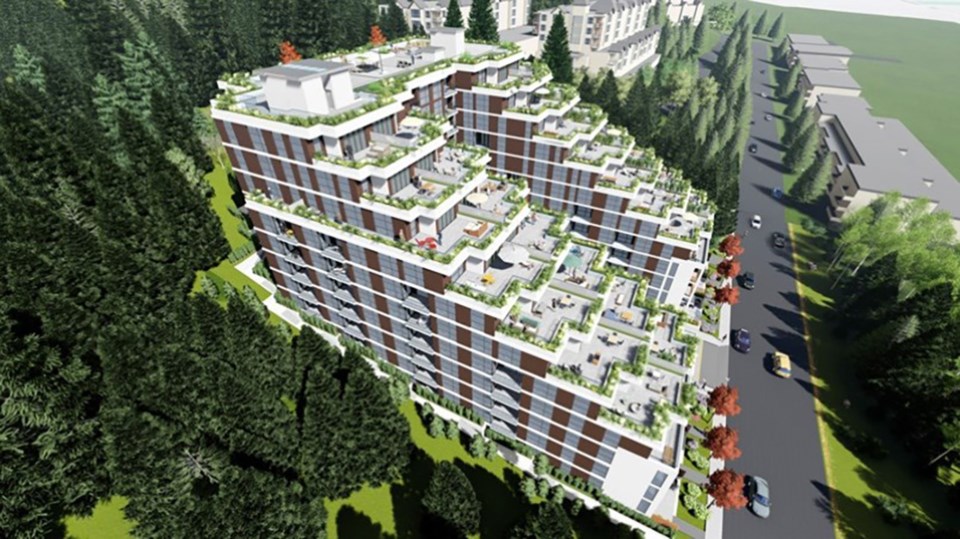The developers behind a unique, terraced residential building that would have brought 173 new homes to the bottom of the Chines along Henry Street in Port Moody are hoping it will still be realized even though the project is now in receivership.
Amin Eskooch, a managing partner of Aultrust Development along with Navid Morawej, said the loss of a financial backer that left the mortgage on four lots where the project was to be located at 3000 Henry St. unpaid for several months forced the legal action just as the company was preparing to open a sales centre.
Eskooch said while the mortgage holder will now be able to sell the property, the obligations Aultrust made to the city in 2020 to secure amendments to Port Moody’s official community plan and zoning bylaws required for the project to proceed remain on title and its future owners would have to comply with them.
Those commitments include a partnership with Kinsight to manage a 1,600 sq. ft. ground-floor suite that will allow several of its clients to live independently, a rent-to-own program for 17 units and a provision to build six lock-off suites that can accommodate extended families or be divided off to create an income property for their owners.
“We were doing something that hadn’t been done before,” said Eskooch, of the project that some councillors at the time lauded as a “unique opportunity” to address Port Moody’s need for more affordable, inclusive and family-friendly housing.
Another councillor called the building’s terraced, U-shaped 11-storey structure nestled into the foot of the Chines “the perfect marriage between the natural environment and the built environment.”
But, the developers conceded, it came with challenges and Aultrust is not the first to have succumbed.
A terraced, mid-rise structure was first proposed for the site by another developer back in 2006 but didn’t get beyond third reading of bylaw amendments in 2012.
A second developer revived the project in 2018 but was bogged down by concerns over geotechnical, environmental and stormwater management issues presented by the site’s sloped terrain.
Eskooch said while his team retained the architecture of the original proposal, it was made more financially viable by reducing the building’s footprint and increasing the number of units from 145. As well, architect Tim Ankenman implemented engineering changes to minimize the need to excavate into the base of the hillside to protect its integrity.
Still, Eskooch said, “it was an ambitious project. We wanted to build something that was not a cookie-cutter building.”
Added Morawej of the proposal that received its development permit last November and was awaiting a building permit after the company submitted its application in March, “We really went to town with all the details. It was a functional project.”
Eskooch said recent housing legislation passed by the provincial government compelling municipalities to increase density near mass transit stations and streamline the approval process for new developments to help ease the housing crisis didn’t have a direct impact on the fate of the project at 3000 Henry St. But, he said, it has muddied the waters for investors who are needed to get shovels in the ground.
“The intent of the province is in the right direction,” he said.
“But there’s still a lot of ambiguity and this creates uncertainty for the development community and when there’s uncertainty, investors back away.”



